
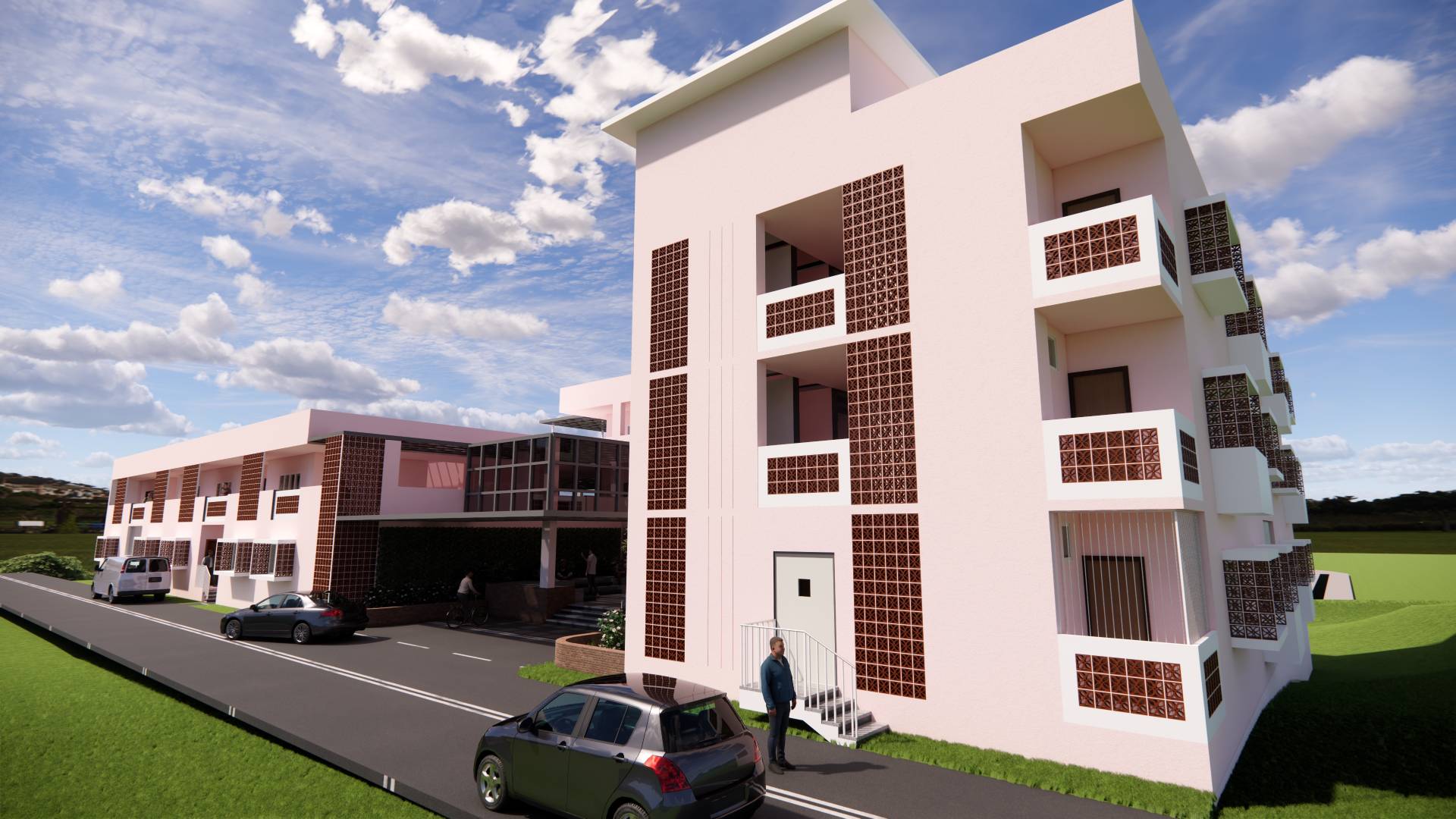
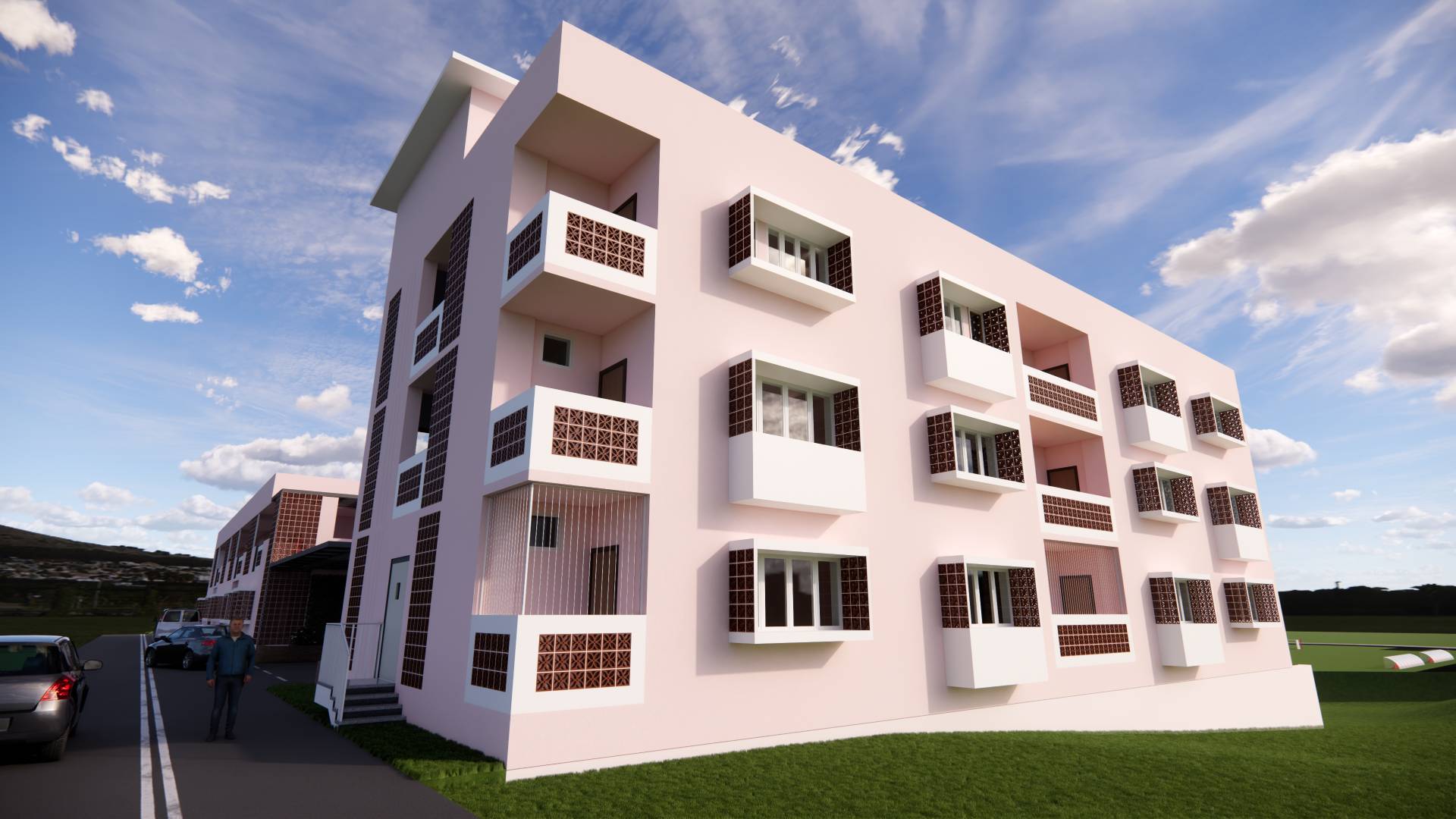
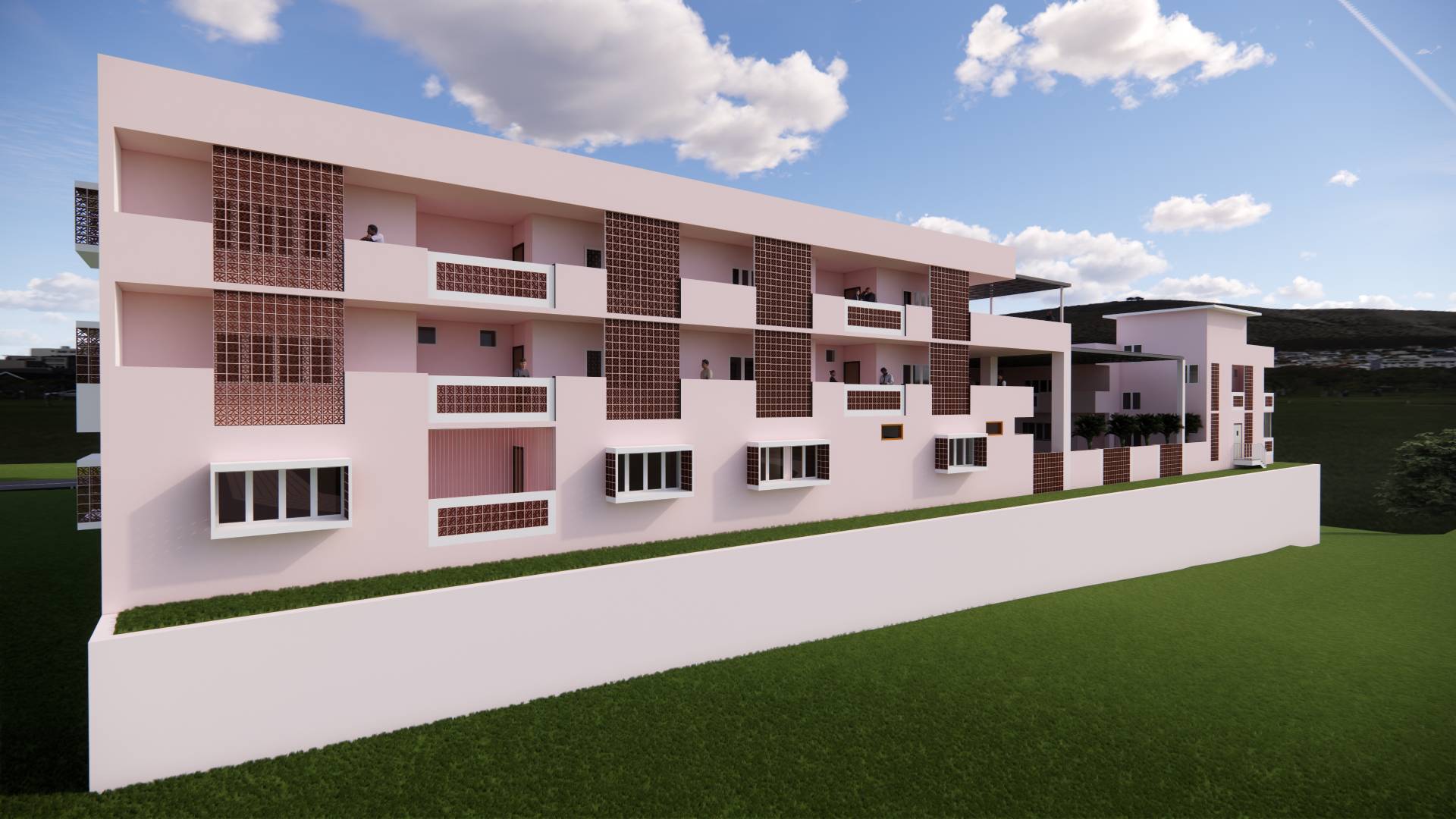
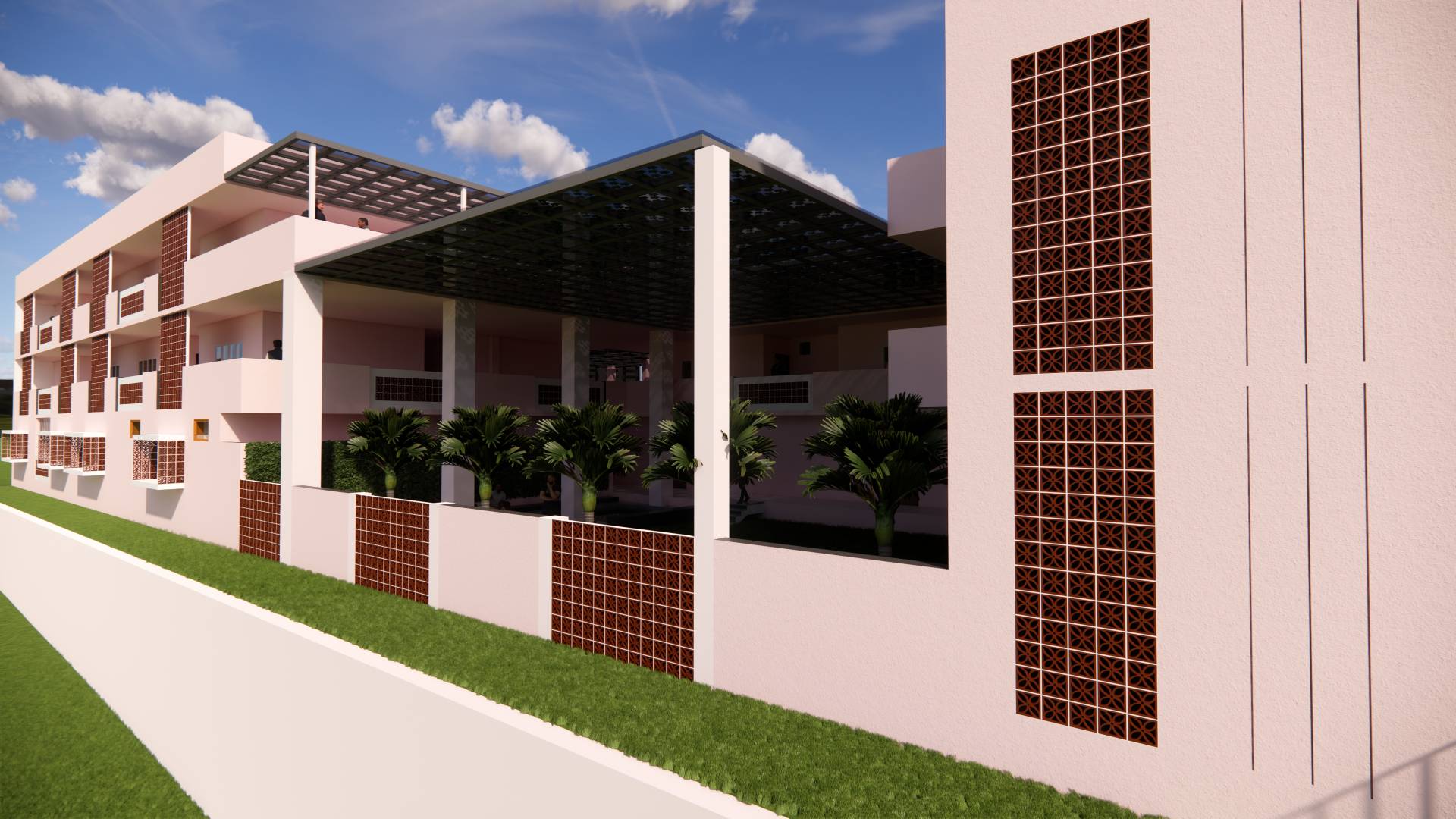
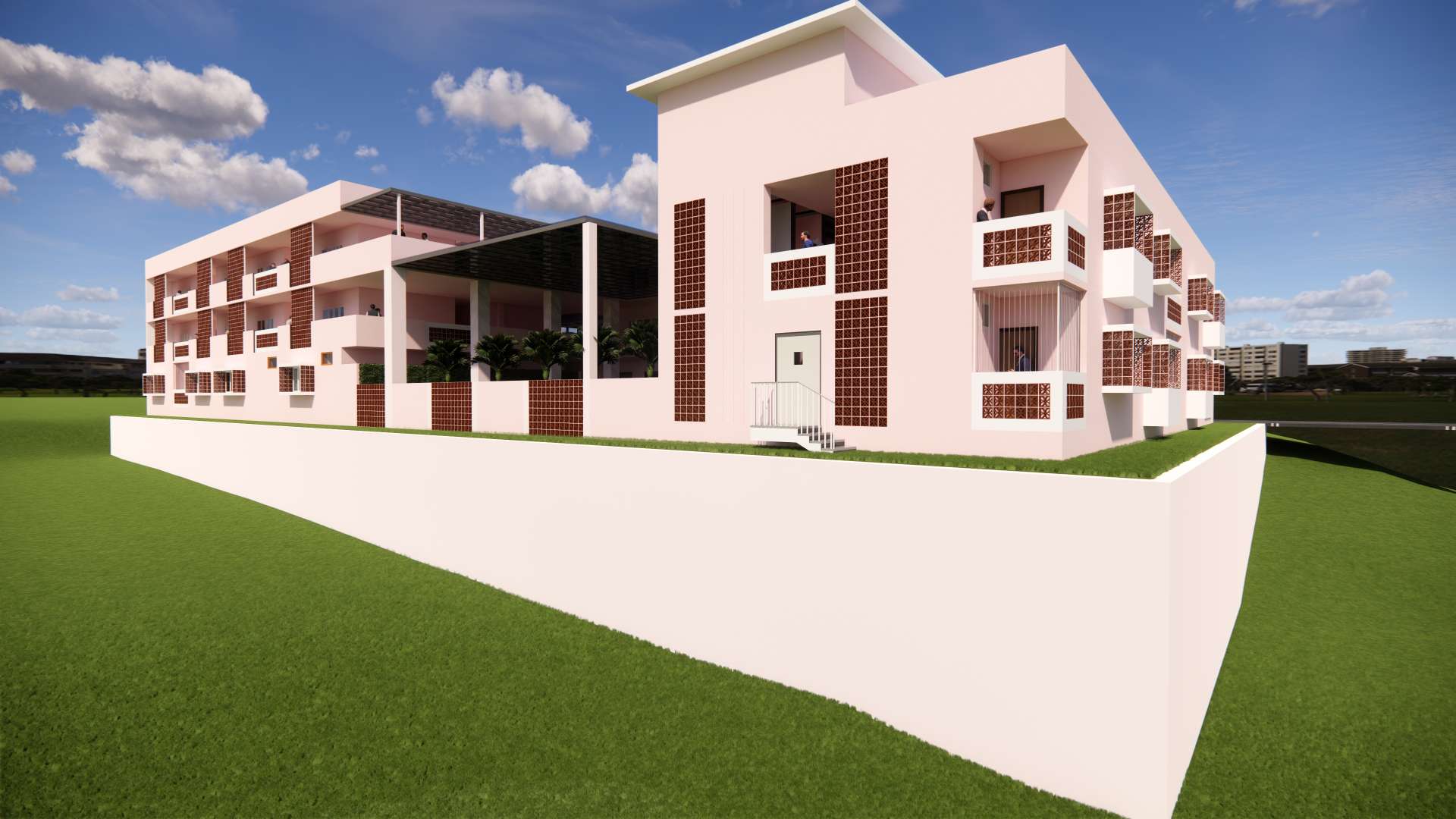
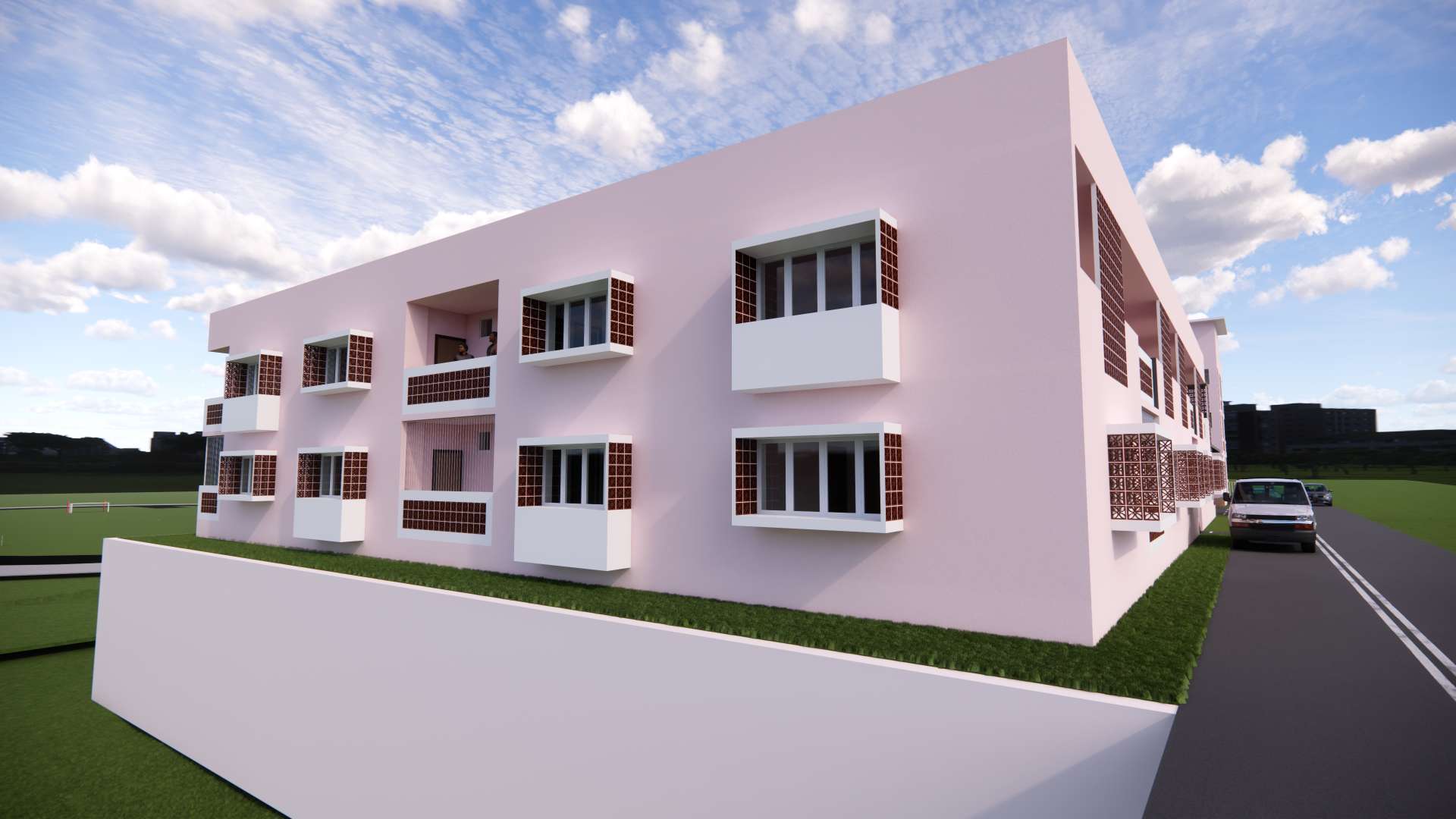
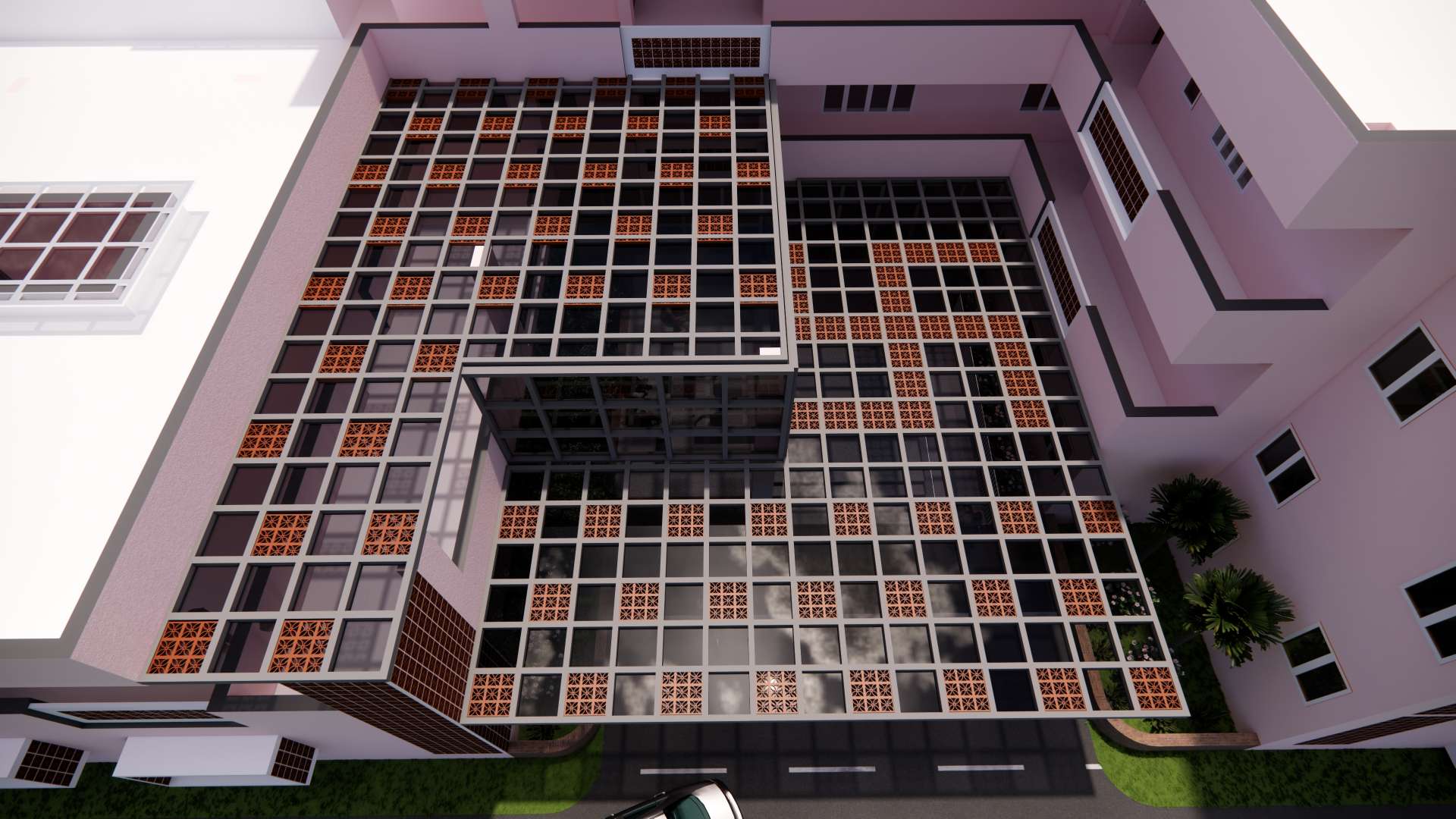
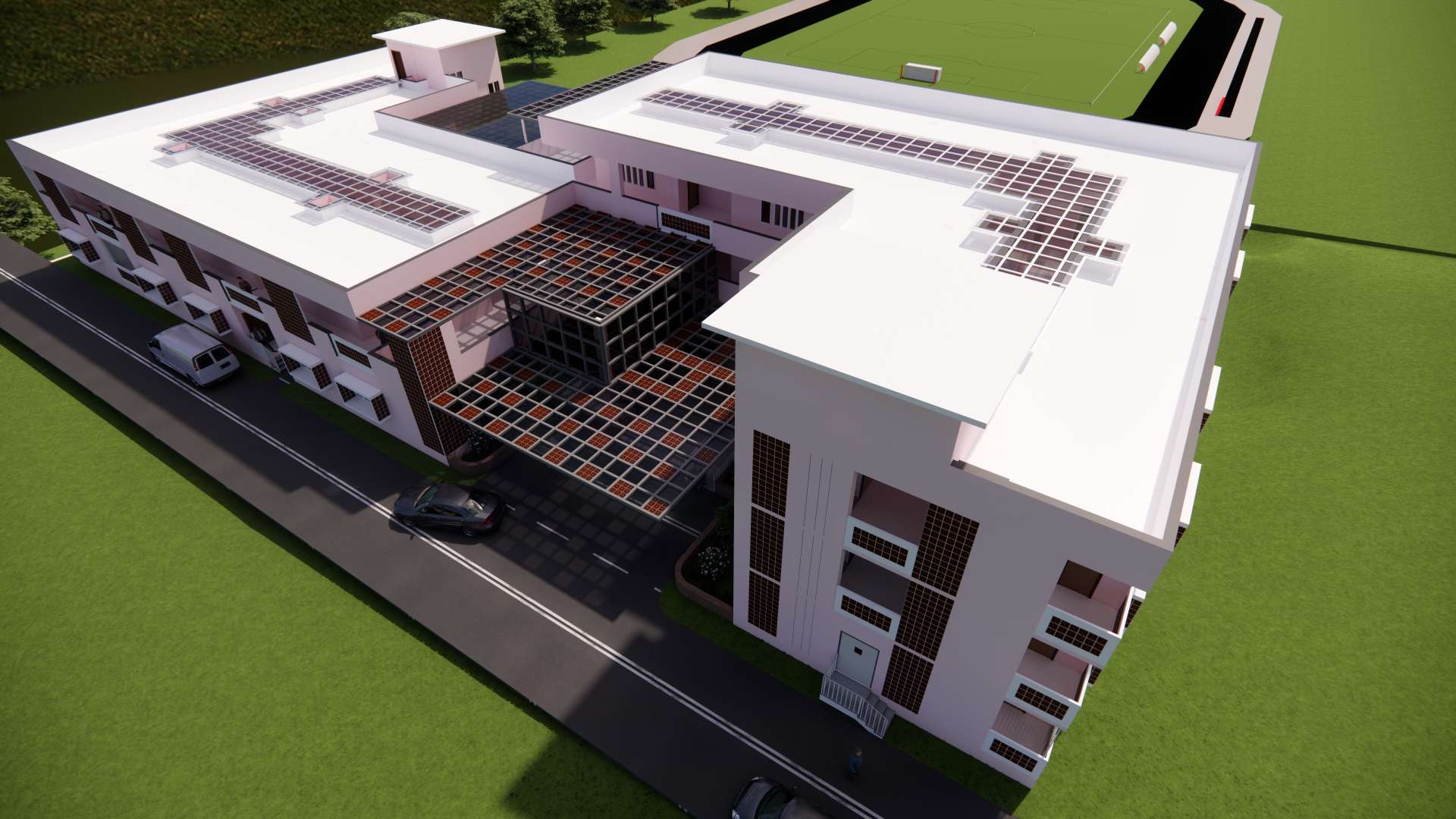
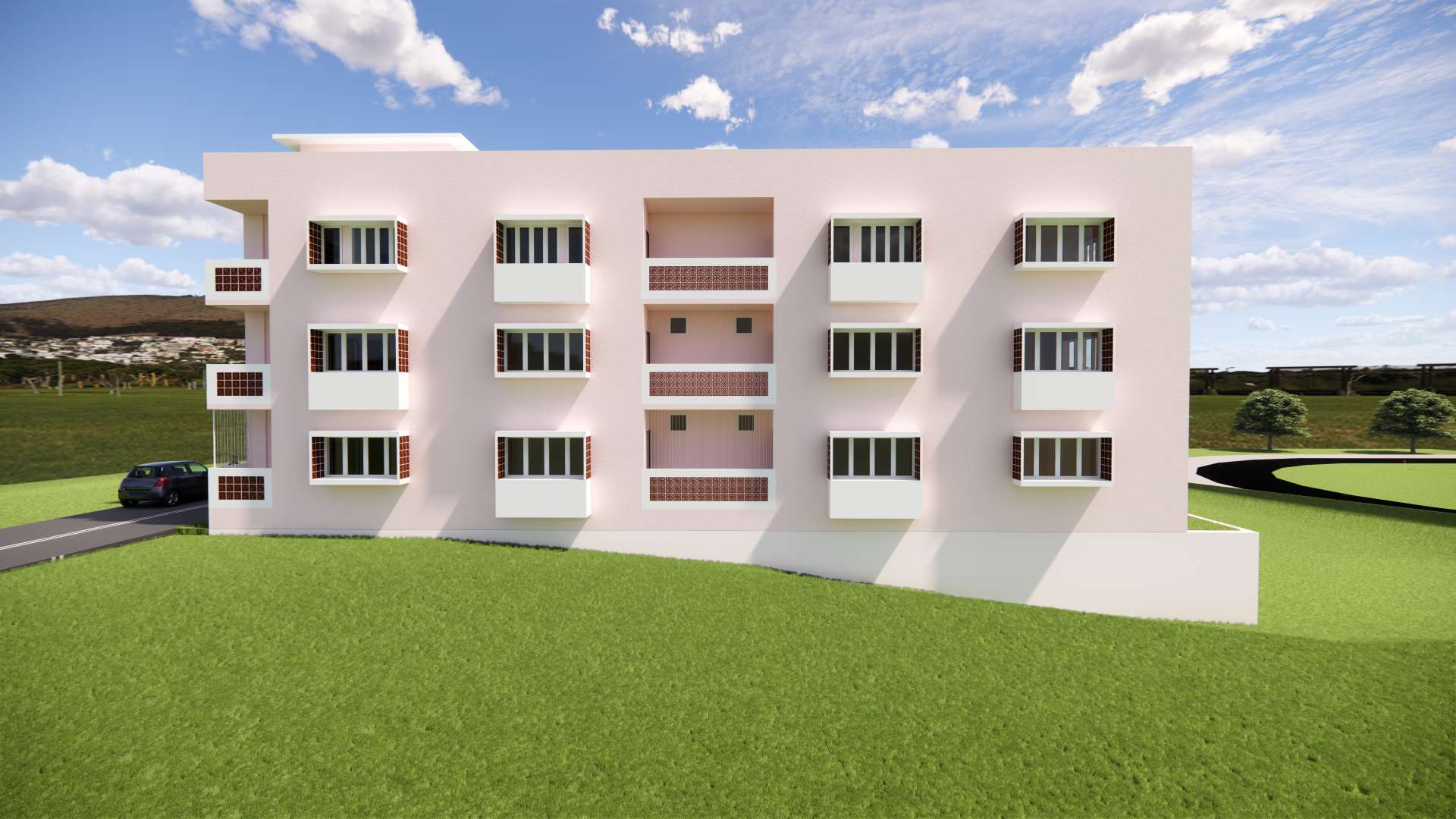
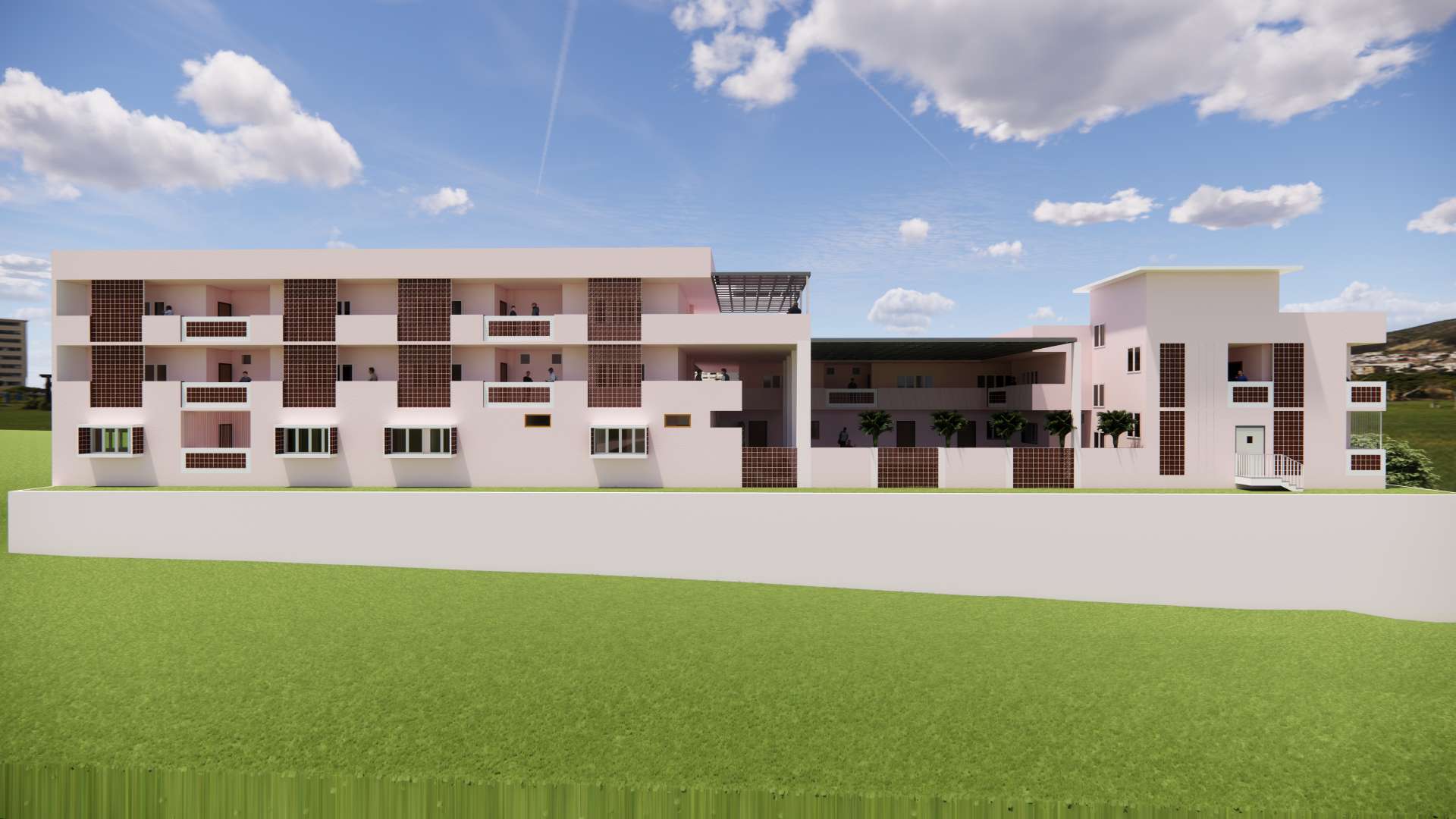
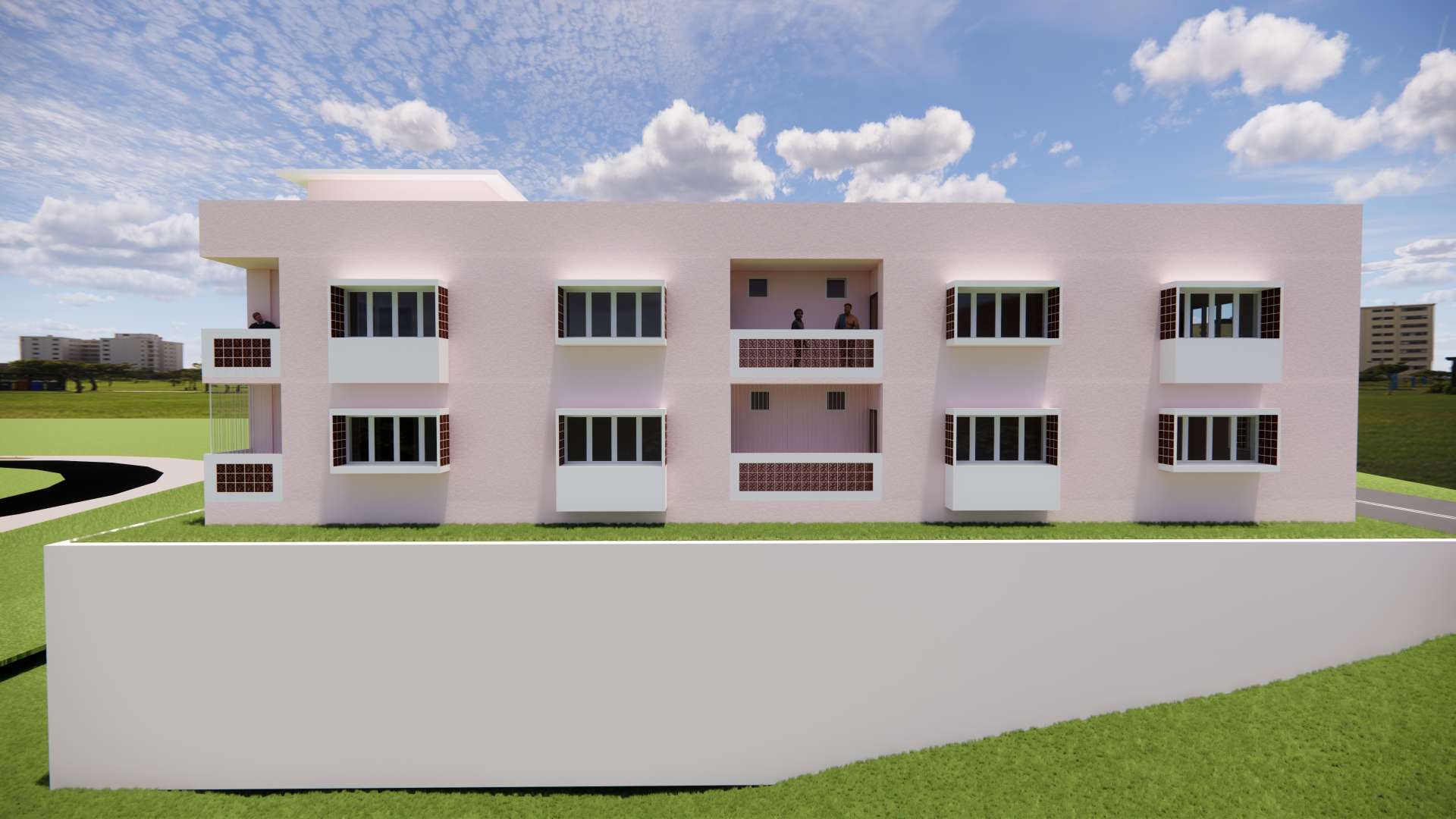
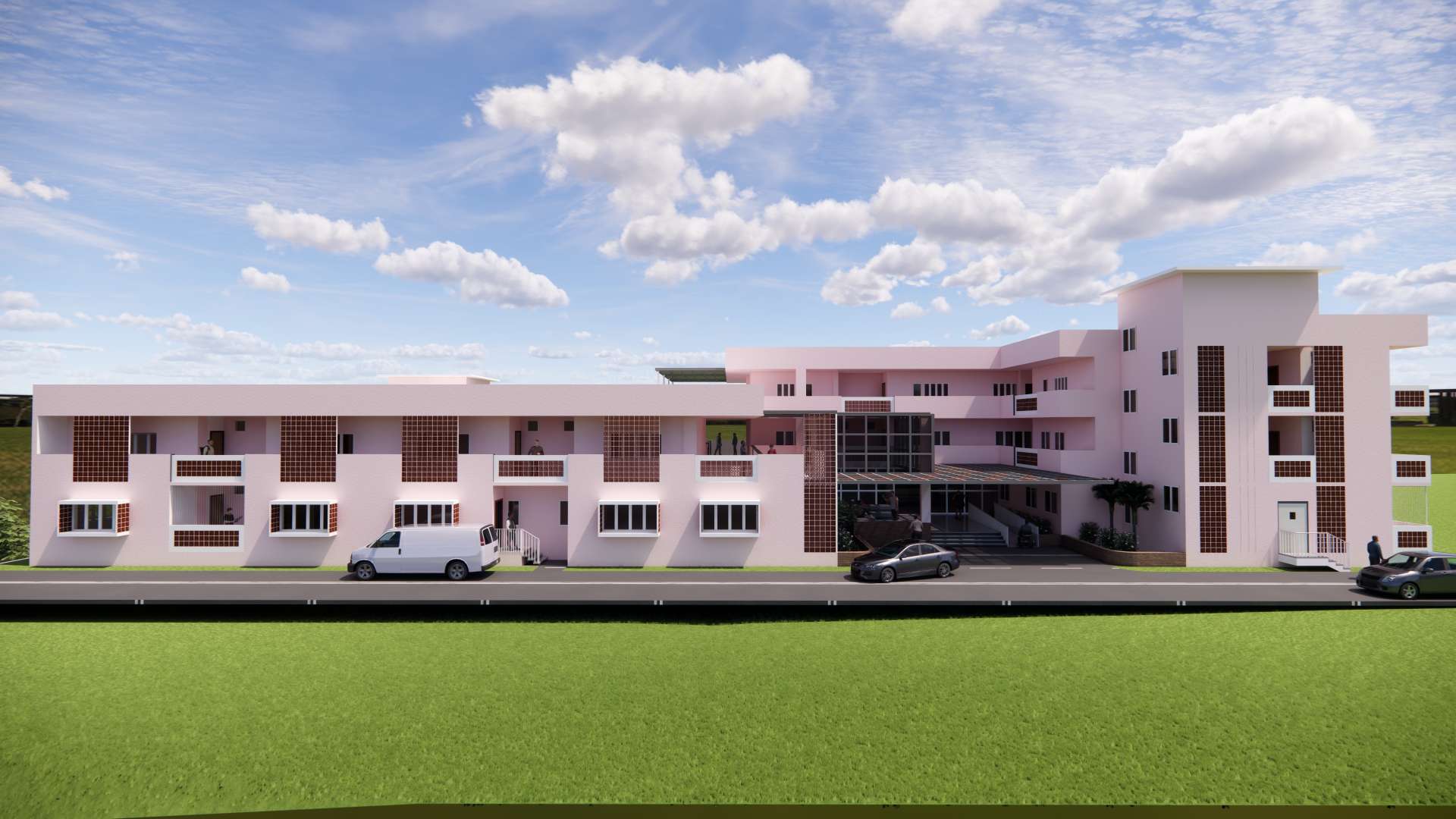
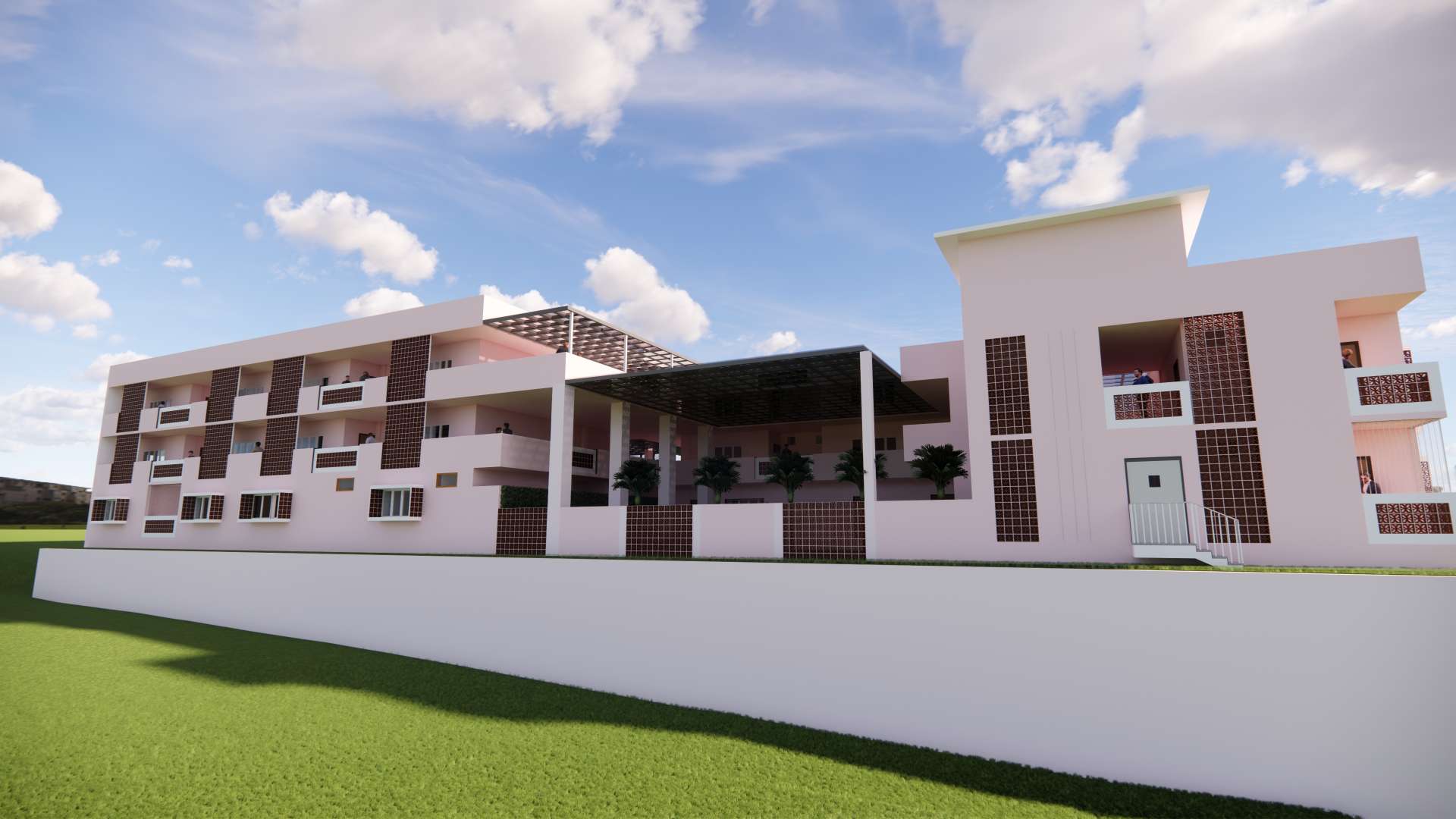
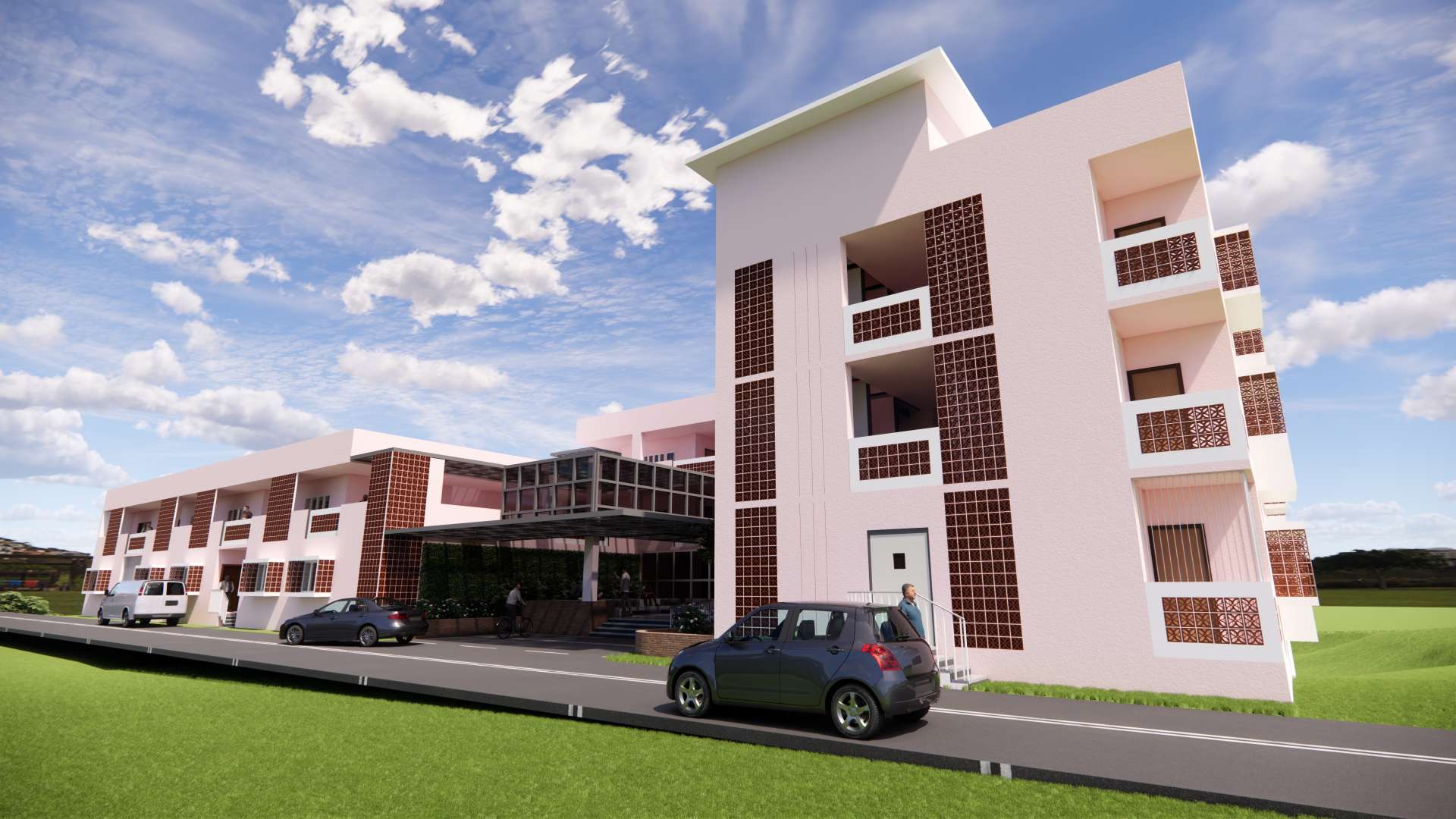
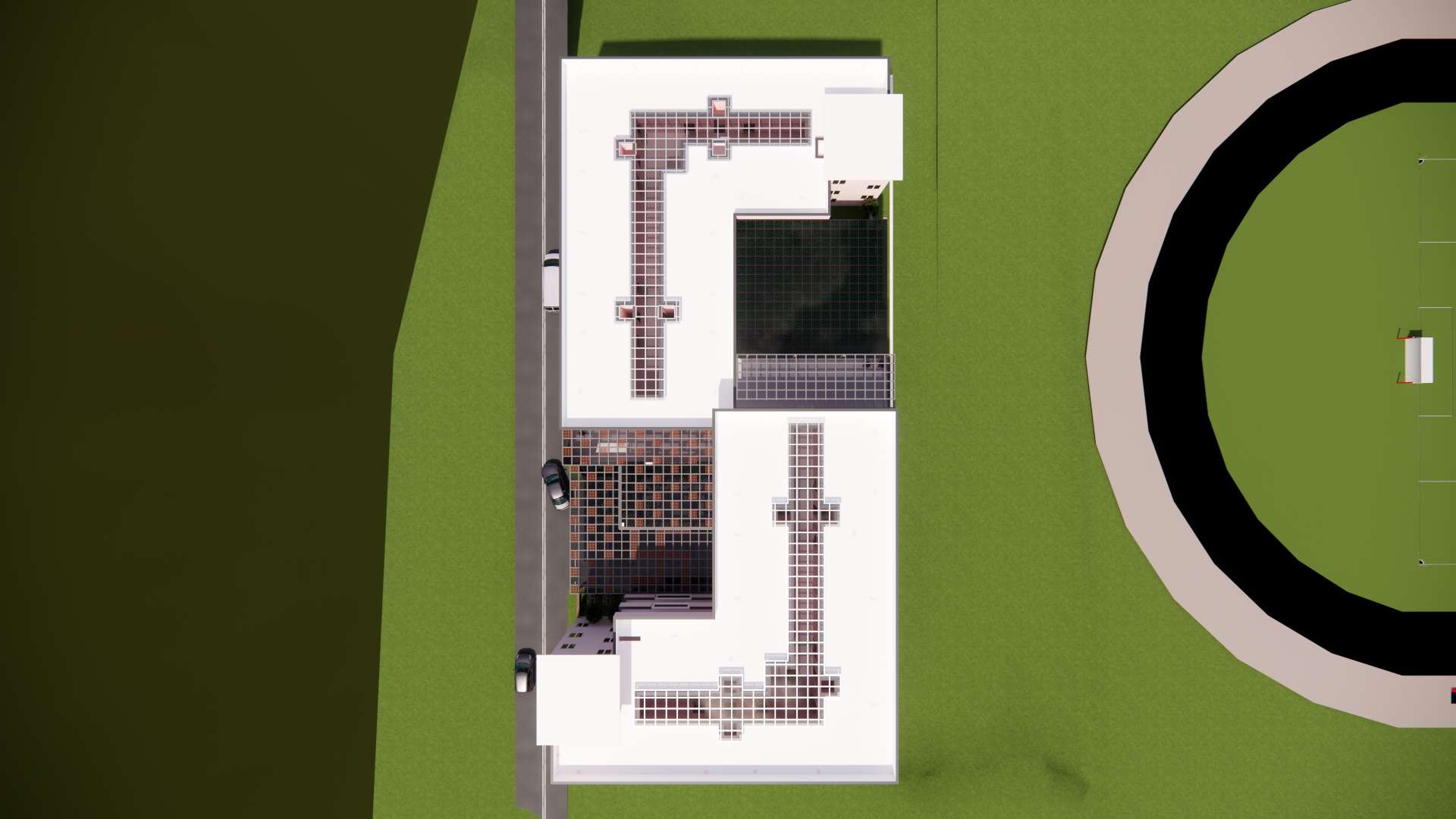
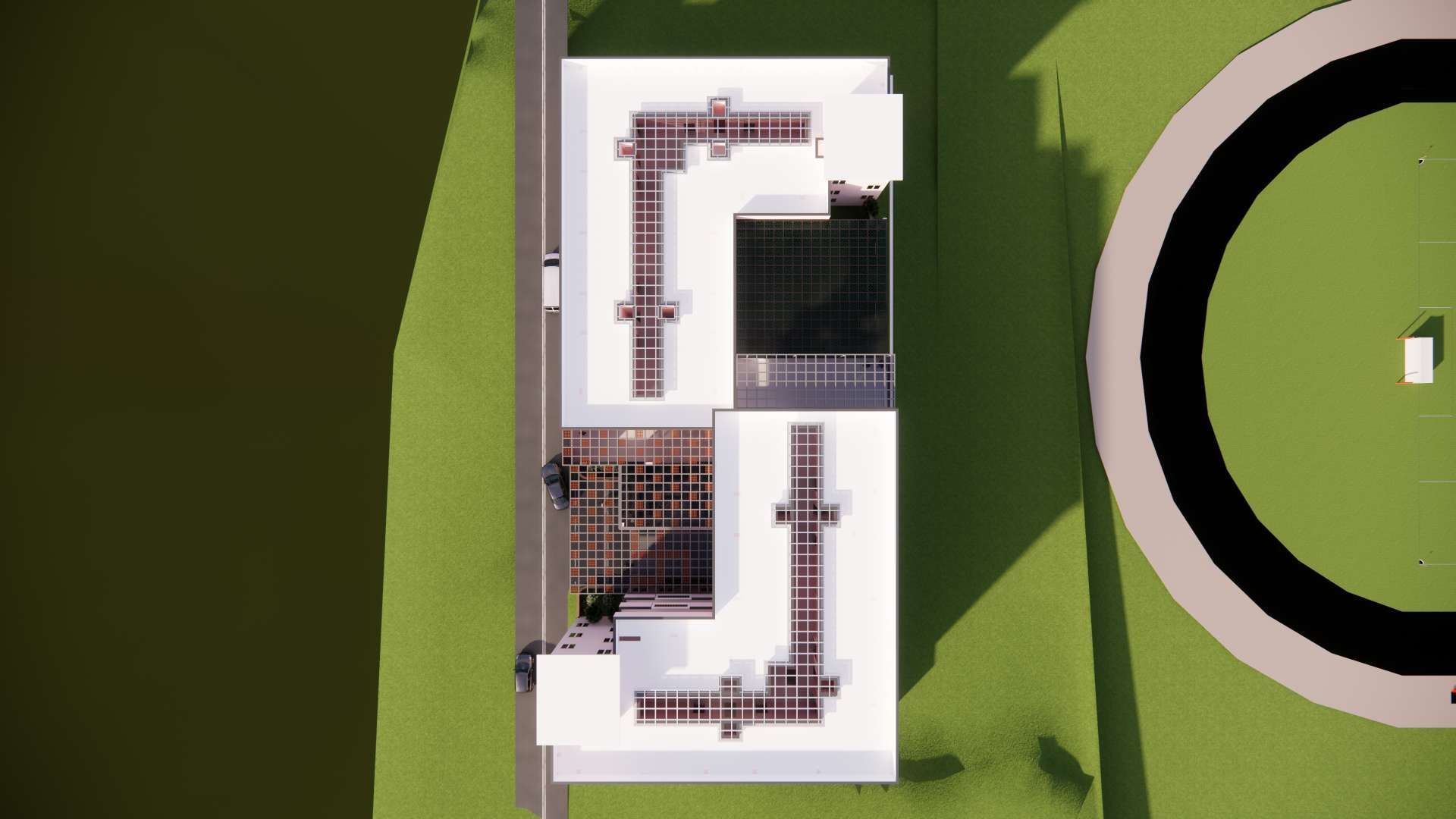
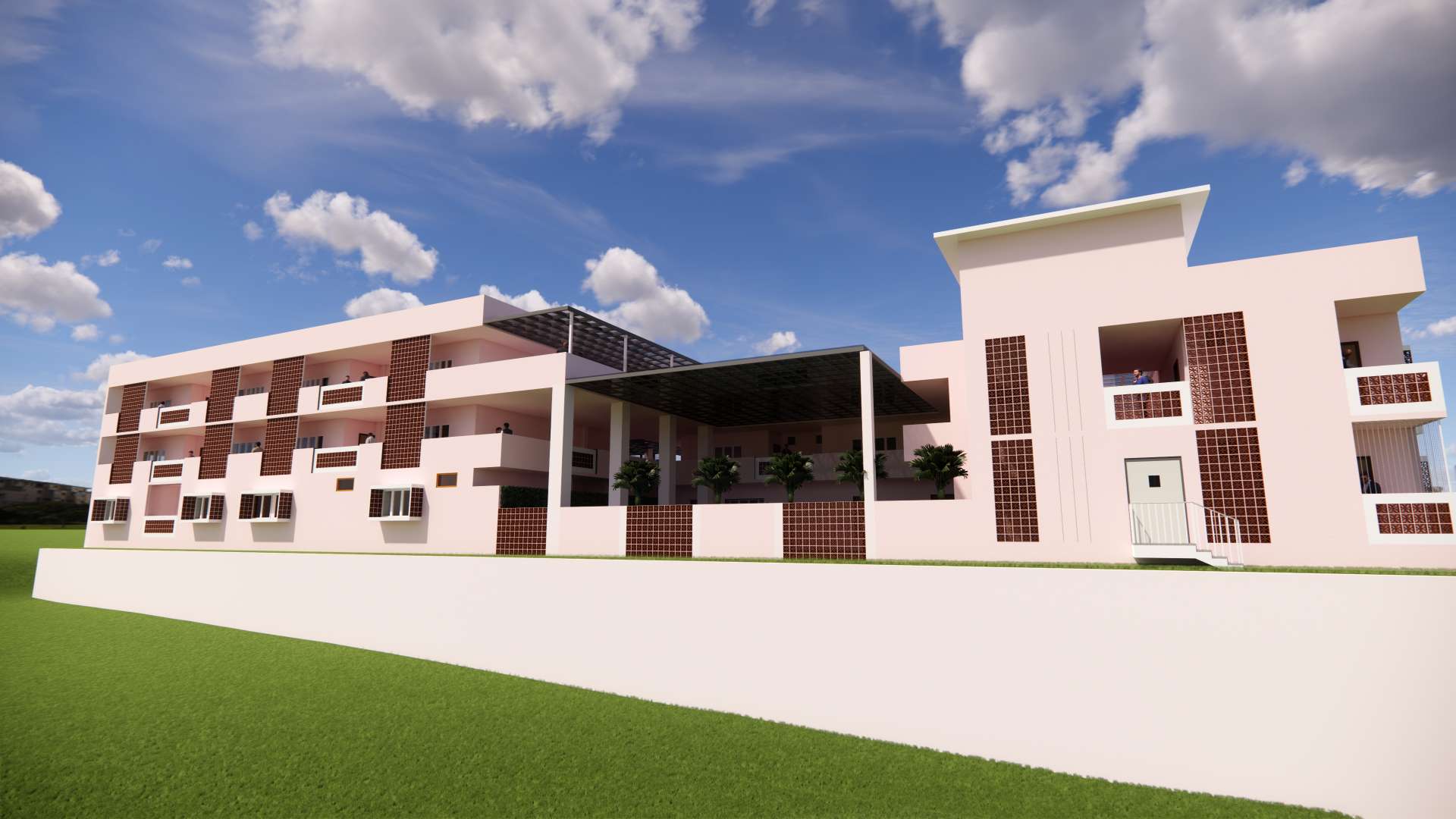
Somnath Sanskrit University Boy's Hostel
Situated in the culturally rich and climatically sensitive town of Somnath, this boys' hostel redefines institutional architecture by weaving together vernacular elements and passive climate strategies. The design embraces terracotta jali screens and earthy material palettes-both a visual homage to the region's heritage and a functional choice to combat heat and glare.
At the heart of the structure lies a generously proportioned central courtyard, serving as a communal and climatic anchor for the entire building. Paired with a broad, elongated corridor, the spatial configuration promotes cross-ventilation and employs the Venturi effect to naturally accelerate airflow, maintaining cooler interior temperatures throughout the day.
This integration of sustainable design principles with contextual aesthetics enhances both user comfort and energy efficiency, creating a welcoming, durable, and low-maintenance living environment. The project stands as a testament to how responsive architecture can elevate everyday spaces while staying rooted in place and purpose.
Jhanvi Associates LLP Privacy Policy
We use cookies to improve your experience on this site. To find out more, read our Privacy Policy


